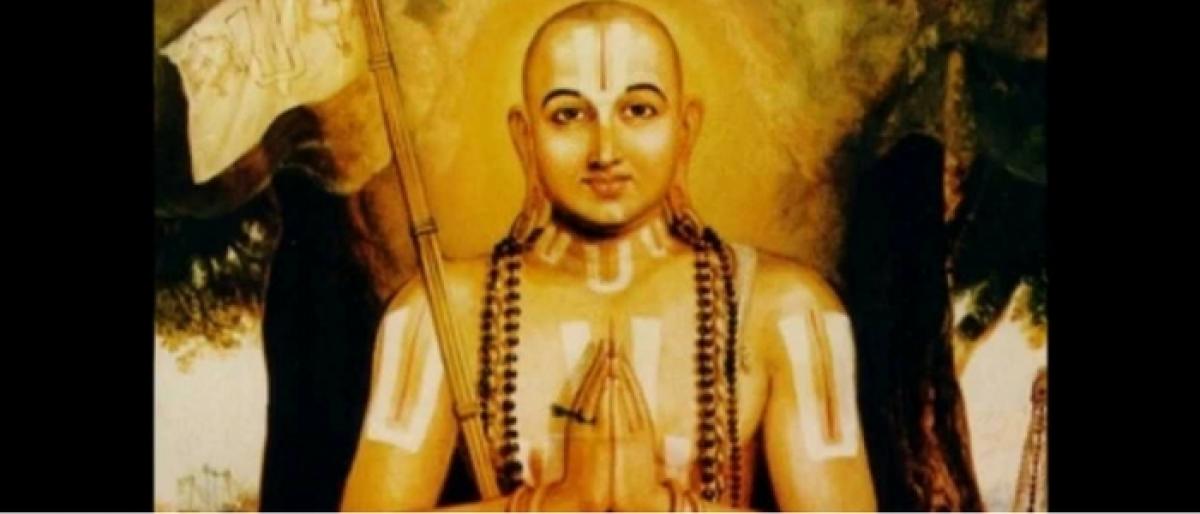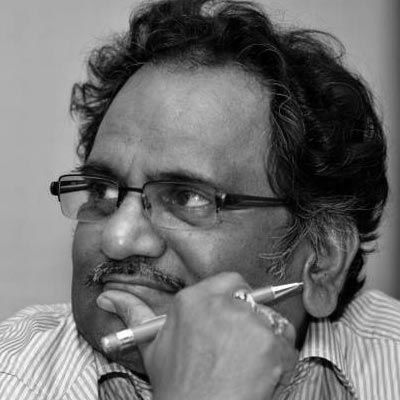Live
- Candlelight Concerts Makes a Dazzling Debut in Hyderabad with Sold-Out 'Tribute to Coldplay' Show
- Shubman Gill Sustains Thumb Injury Ahead of Perth Test; Devdutt Padikkal Joins Test Squad
- Unlock Loot Boxes, Diamonds, Skins, and More Exciting Rewards with Garena Free Fire Max Redeem Codes for November 16
- Regarding the DOGE Plan, Vivek Ramaswamy stated, "Elon Musk and I Will Take a Chainsaw to Bureaucracy"
- Sudanese army says repulsed paramilitary forces attack in western Sudan, killing over 80
- Jaipur Open 2024: Baisoya makes a grand comeback to clinch title in marathon playoff against Rashid Khan
- Jamaat-e-Islami Hind President asks cadre to reach out to larger society beyond community
- Why PM mum on Caste Census, removing 50 pc quota limit: Rahul Gandhi
- Barrackpore Municipality Vice-Chairman found dead at home, suicide note suggests blackmail
- Selection trials announced for 20th Asian Senior Women's Handball Championship
Just In

Thousand years ago one person broke the laws of secrecy and revealed sacred mantras from top of the Gopuram to all, rebelled against caste-based hierarchical anarchy and respected non-Brahmin personalities as Gurus and Shishyas, and opened the doors of temples for dalits and tribals.
TTD should start schools for all
Thousand years ago one person broke the laws of secrecy and revealed sacred mantras from top of the Gopuram to all, rebelled against caste-based hierarchical anarchy and respected non-Brahmin personalities as Gurus and Shishyas, and opened the doors of temples for dalits and tribals.
He is Ramanuja, a highly revered Jagadacharya, the teacher for the universe, one of three recognised paths of realisation – a) Advaitha- Mono Theist of Adi Shankaracharya, b) Vishishta Advaita, refined dualistic by Ramanuja, and c) Dwaita, dualistic by Madhvacharya.
Ayurveda says complete life of a human is 120 years. Born on 4th April 1017, Ramanuja (1017-1137AD) had poornayus. He believed in and practised the principle of sharing the knowledge and honoured the right to information/right to knowledge of all equally, by openly explaining the secretly guarded important mantra and its inner meanings to facilitate the liberation of all from mundane bondages.
Maryada Purushottam Ram is the Avatar of Narayana through the lineage of Raghu Vamshi King Dasaratha and Kousalya through divine Putra Kameshthi Yajna. It was considered that Putra Kameshthi was performed by Keshavacharya and Kantimati in Sri Perumbudur, near Chennai in 1016, for a son and obtained Lakshmana, the brother (Anuj) of Rama.
Considered incarnation of Adi Shesha, who can answer many with his thousands of heads at a time, Ramanuja was also considered to have symbolic qualities of Sudarshana (Disc), Shankh (conch), Gadha (mace), Sharnga (Bow) and Khadga (sword) to win the wars in intellectual debates.
Ramanuja, born in Smartha caste, grew as Vaishnava and became the pioneer of Vishishtadvaitha philosophy, qualified non-dualism, now called as Ramanuja School. Sri Rangam, Kanchi, Tirumala and Melkote were his focused working places through which his preaching, practices and conventions are being observed even today.
During the eleventh century, the Muslim invaders were at their peak destroying temples, throwing away the principal deities and stealing away the Utsava Vigrahas, besides forcing conversions. Without wielding any weapon, he rebuilt the temples, re-consecrated the sanctum sanctorum, and collected back the idols from Nawabs and Muslim emperors in south and north.
His real weapons were humane compassion, simple language, communication skills and effective reasoning. After Adi Shankaracharya (788 to 820AD), he is another great intellectual warrior who waged successful wars on ignorance and rival religions, with the force of non-violence and knowledge.
Ghajni Mohammad (971-1030) was wrongly quoted as an example of perseverance for his repeated invasions to destroy Hindu kingdom. The right model is Ramanuja, because he made 18 attempts to convince Acharya Goshthi Poorna to impart him the Asthakshari - Tirumanthra (of eight syllables, =Om Namo Narayaanaaya) and Dwaya (dual) mantra (Srimannaarayana Charanou Sharanam Prapadye Srimathe Raamaanujayanamaha) and their inner meanings.
Every time Acharya of Tirukosthiyur in Tamil Nadu used to return Ramanuja saying, “Not now, come next.” He was testing his patience and egoless, submissive humbleness. He used to walk around 50 km from Sri Rangam to that village and back disappointed.
At his 18th attempt, the Guru finally melted and mercifully granted the knowledge with a strong condition that he should not reveal to all and sundry without testing the abilities and qualities. He was ordered to reveal it only to one of his very loyal disciples at the last hour of his life. He warned that breach of promise would lead him to the Hell. He agreed.
While returning, he thought if it was so difficult for him to attain this knowledge, who will come to the rescue of millions suffering from ignorance? How can anybody pass these rigorous tests? Then he climbed up the Gopuram of Soumya Narayana Temple in Tirukoshthiyur, called all the people around and revealed the secrets of liberation from ignorance. Guru came; he was very furious. He considered it as treachery.
Ramanuja attended the admonition and said, “Yes, I am guilty of breach of promise and ready to take the punishment.” Guru asked why he did this. Ramanuja answered: “What if I go to Hell, when these millions could attain liberation and Vaikuntha, abode of Narayana. I have no hesitation to go to Hell.” Goshthi Poorna was dumb-struck at the noble thought, sacrifice, his compassion and concern for fellow beings. He embraced him and called him Emberumanaar (My Lord).
When the Hindu society was ruled by such orthodox and meaningless traditions that only a section of people were entitled to divine education and others including women were denied, it was Ramanuja who propounded and preached that the knowledge is open, belongs to all and everybody has right to information about available means of salvation.
He is father of right to information in India. Today, we find the idol of Ramanuja and his Guru on the gopuram of that temple. The Indian Constitution today says, the public resources cannot be denied on grounds of caste, creed or religion (Articles 14 to 16).
Ramanuja, a scholar in Samskrt, Tamil and also in Manipravalam, a beautiful blend of Samskrt and Tamil. He authored many works presenting the Veda and Upanishad from a Visishtadvaita perspective such as, three Bhashya (commentaries) – Sri Bhashyam on Brahma Sutra, Gita Bhashyam on Bhagavad Gita and Vedartha Sangraha an overview on Upanishads – three prose texts: Gadya – Sharanagati Gadyam, Sriranga Gadyam and Vaikunta Gadyam on Sri Vaishnavam – and Vedanta: Vedantasara and Vedantadeepa (concise commentaries on Brahma Sutra) – and Nitya Grantha (Daily Rituals for a Sri Vaishnava).
These are referred to as Navaratnas – nine gems; he attained the title Bhaashyakaara, the expert in ultimate interpretation of Vedas. He brought out 12 Alwars (top Vaggeyakara of Vishishthadwaita, who penned and sang 4,000 plus verses called Naalaayira Prabandham and other great works like Tiruppavai by Goda, consecrated their idols. These 12 great devotees include 8 non-Brahmins and a woman.
In temples today, Ramanuja is also added to these idols. Ramanuja was the one who found social discrimination to be incorrect and acted on it to bring in the concept of Thirukulaththor where everybody was regarded as belonging to the same Kula, the lineage that comes from the divine. He established a model keeping the temple as the centre, creating roles for each community, finally joining them all through, food, prasadam as a Sama (equal) Pankti (row) bhojana (eating food).
Ten centuries ago, he had travelled across the length and breadth of this continent from Thiruvananthapuram to Dwaraka in the west, to Kashmir and to Muktinath, Nepal in north, and to Puri Jagannath in East to establish a parampara both in worship and good living.
Ramanuja was one of those visionaries that understood the importance of harnessing waters in remote villages. He built a few and renovated many temple tanks right in the middle of the village, which not only ensured water for temple, but also for drinking and irrigation.
For instance, the 2,200 acre temple tank at Tondanur, called Tonnur Kere about 20 km from Melkote, has been is providing water to 70 villages for the last 1000 years. He established the practice of providing food to all devotees irrespective of caste and creed in every temple, which is called Ramanuja Kootam.
Another great adventure of Ramanuja was his travel to Delhi at the age of 80 to convince Sultan and secure idol of Thiru Narayana, which was looted from Melkote Temple. Sultan was convinced by his logic and offered the idol back to Ramanuja. The legend goes that daughter of Badshah Laachma Bibi took fancy of the idol and could not bear the separation.
She came all the way to Melkote after Ramanuja and worshipped Thirunaarayana. Ramanuja installed her idol, giving her status of consort of Lord, called Bibi Nanchari where Roti is offered as Naivedyam even today. Prime Minister recently released the commemorative stamp of Ramanuja and pointed out that BR Ambedkar and Swami Vivekananda had specifically recorded their appreciation for Saint Ramanuja. Tirupati town is originally called after its builder as Ramanuja Puram.
It is said that he designed town in Garuda shape to match Sheshachalam. The TTD administers Tirumala Tirupathi with the systems installed by Ramanuja that attract millions every day with huge income. It is appropriate for TTD to use those funds for which Ramanuja is the source, to start millions of Ramanuja Schools to impart regular education to all irrespective of caste and creed, free of cost.
They need not spend crores on celebrating or printing, it’s more than enough if they spread knowledge to all. (Based on a paper presented by the author at Sri Venkateswara Veda Vishvavidyalayam at Tirupati on 8th July 2017)

© 2024 Hyderabad Media House Limited/The Hans India. All rights reserved. Powered by hocalwire.com







